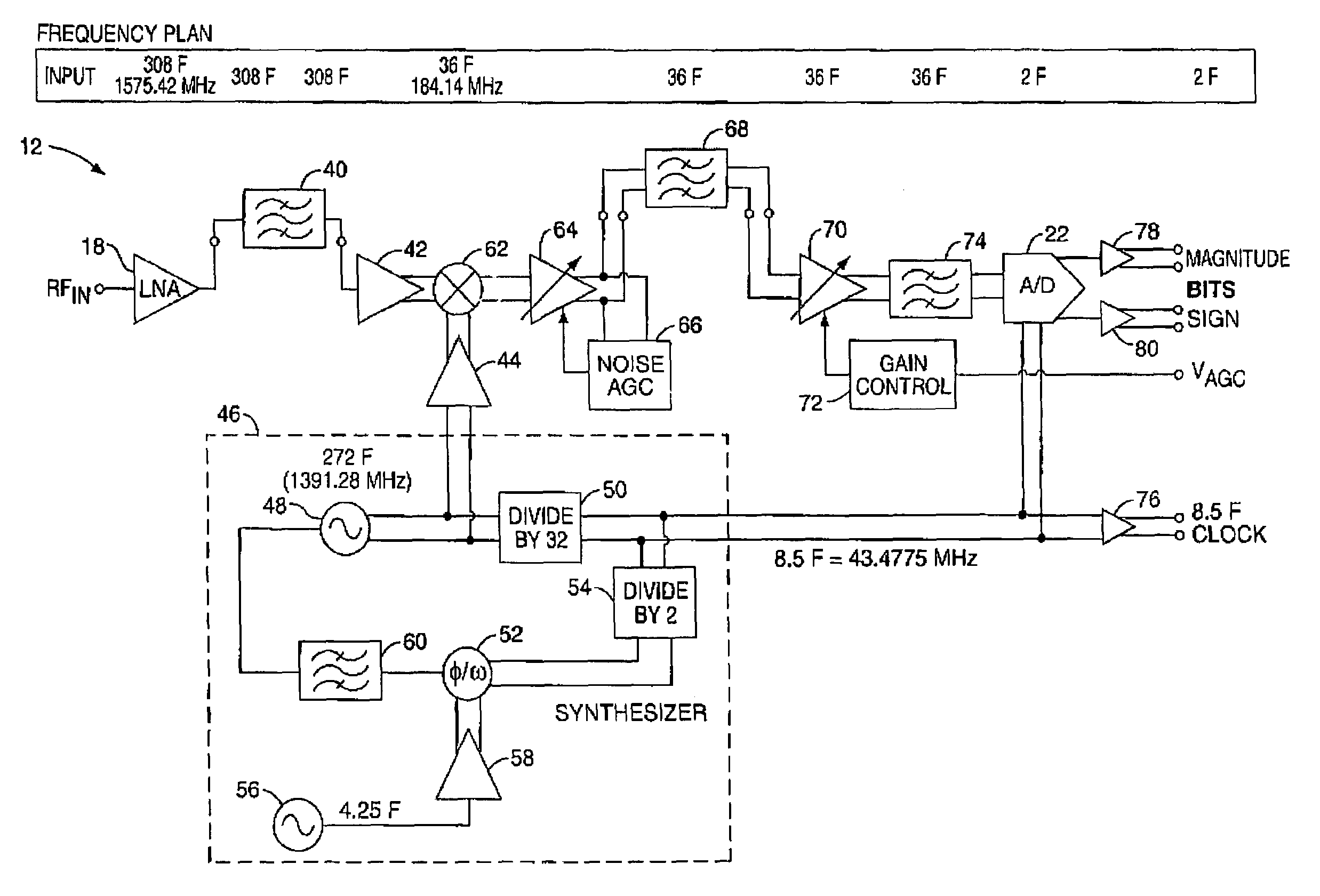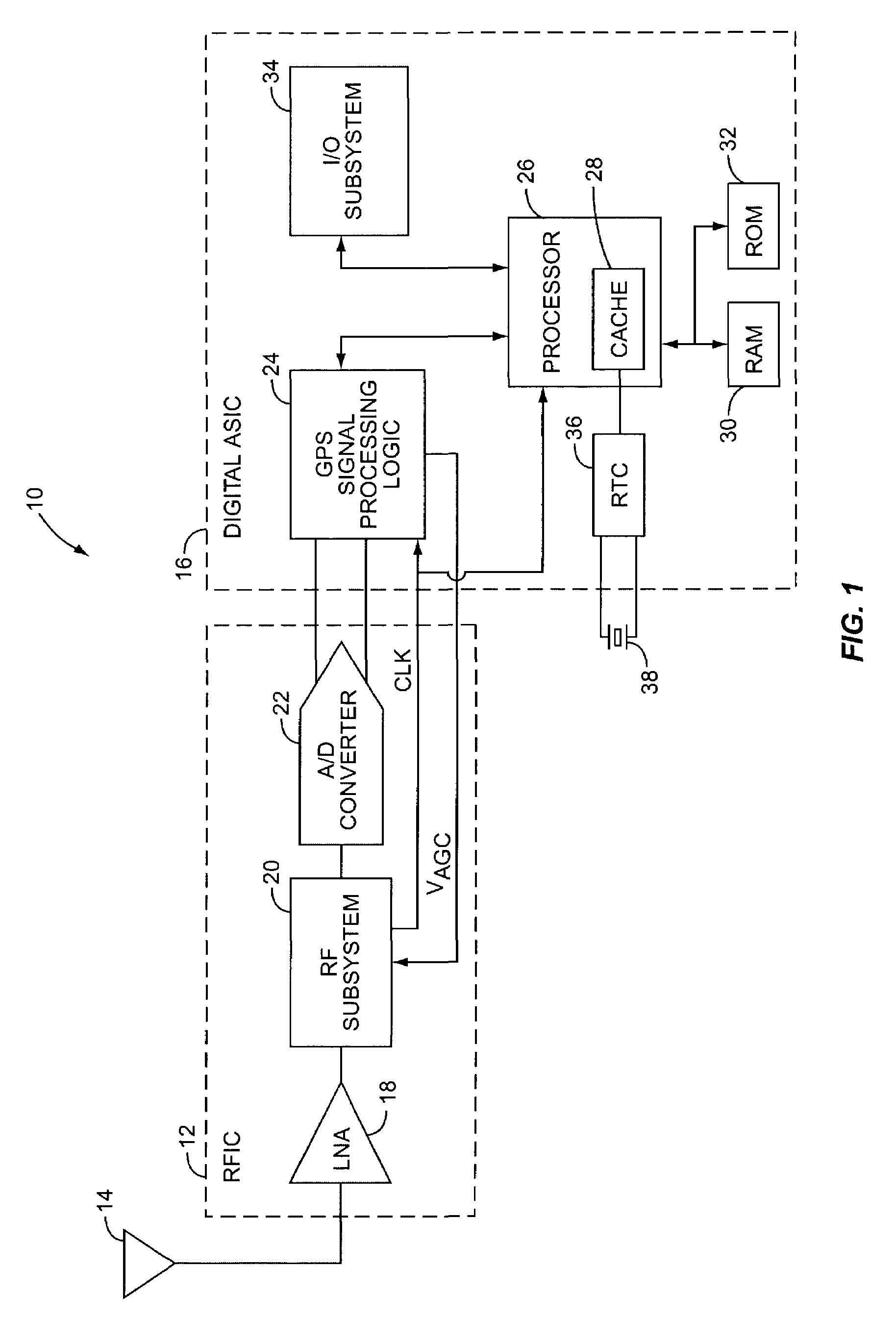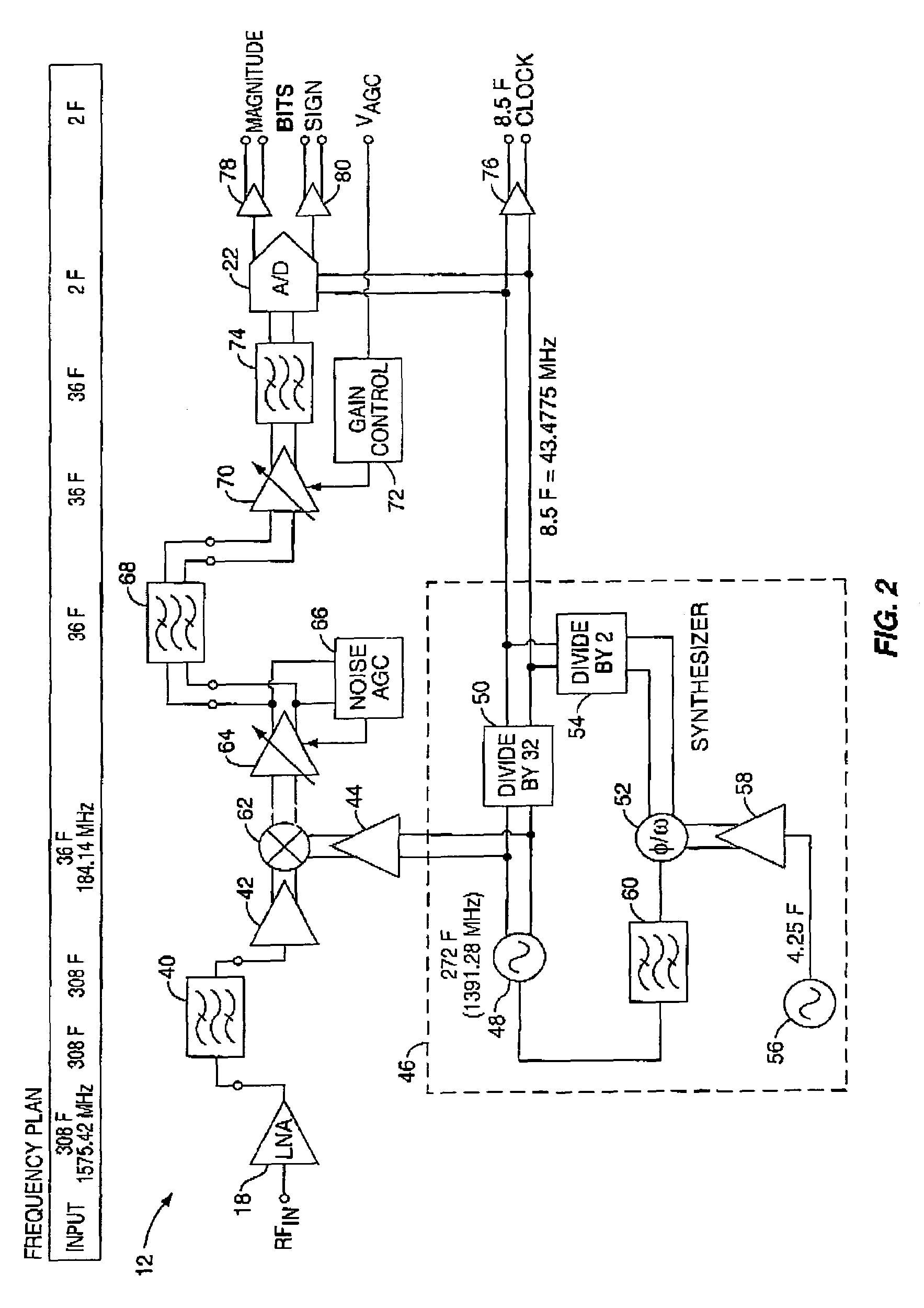Frequency plan for GPS receiver
a frequency plan and receiver technology, applied in the field of gps receivers, can solve the problems of reducing the accuracy of time measurement in the receiver design, the sampling bandwidth of the receiver, the number of sampling bits, etc., and achieve the effect of removing interferen
- Summary
- Abstract
- Description
- Claims
- Application Information
AI Technical Summary
Benefits of technology
Problems solved by technology
Method used
Image
Examples
Embodiment Construction
[0016]The embodiments set forth below represent the necessary information to enable those skilled in the art to practice the invention and illustrate the best mode of practicing the invention. Upon reading the following description in light of the accompanying drawing figures, those skilled in the art will understand the concepts of the invention and will recognize applications of these concepts not particularly addressed herein. It should be understood that these concepts and applications fall within the scope of the disclosure and the accompanying claims.
[0017]The present invention is preferably incorporated in a GPS receiver 10. The basic architecture of a GPS receiver 10 is represented in FIG. 1 and may include a radio frequency integrated circuit (RFIC) 12, an antenna 14, and a digital application specific integrated circuit (ASIC) 16. The RFIC 12 receives information previously modulated on a radio frequency carrier from one or more satellite vehicles through antenna 14. A low...
PUM
 Login to View More
Login to View More Abstract
Description
Claims
Application Information
 Login to View More
Login to View More - R&D
- Intellectual Property
- Life Sciences
- Materials
- Tech Scout
- Unparalleled Data Quality
- Higher Quality Content
- 60% Fewer Hallucinations
Browse by: Latest US Patents, China's latest patents, Technical Efficacy Thesaurus, Application Domain, Technology Topic, Popular Technical Reports.
© 2025 PatSnap. All rights reserved.Legal|Privacy policy|Modern Slavery Act Transparency Statement|Sitemap|About US| Contact US: help@patsnap.com



